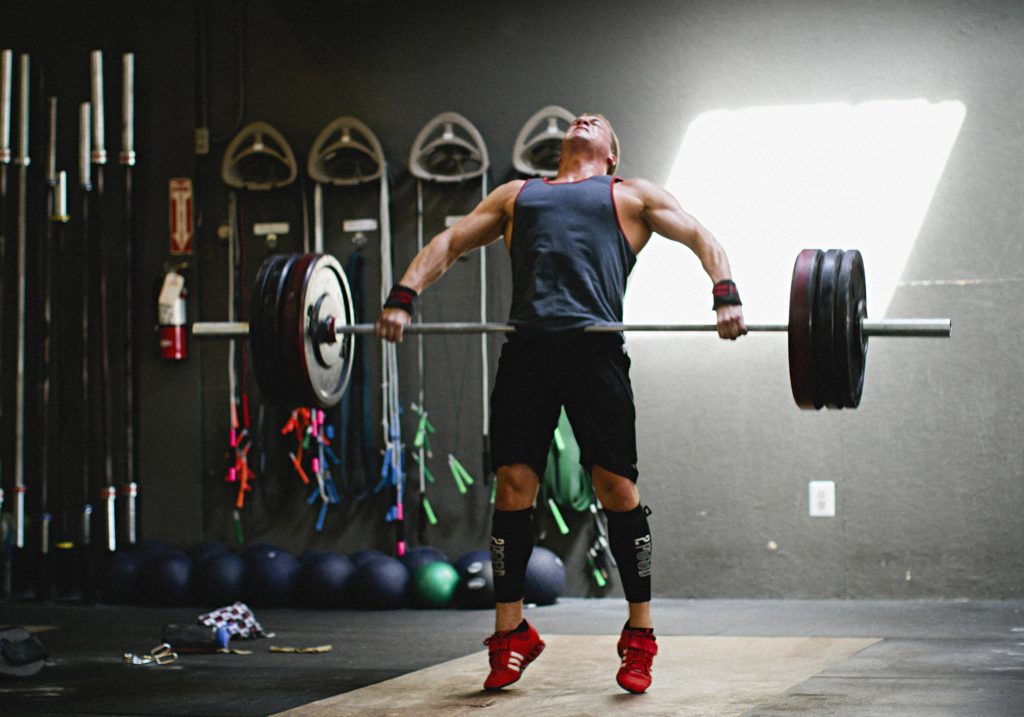“Power” is the Power Clean’s first name. That should tell you right away that the exercise is a football player’s best friend.
In football, speed and power are what determine much of the difference between starters and non-starters. The Power Clean, which requires you to exert force against the ground through a series of rapid movements, is an ideal way to develop the explosive power and quickness you need to be successful on the gridiron. Here are five reasons why you should add this important lift to your training program.
1. Triple Extension
At the start of the Power Clean, your ankles, knees, and hip joints must extend simultaneously—in an movement known as “triple extension”—to provide the explosiveness you need to begin moving the bar. Those same joints have to work together when you make a tackle or blast a defender off the ball. Training sport-specific movements like the Clean increases athletic performance.2
2. Speed
During the Clean, speed is transferred from the body to the bar. This trains you to be explosive, because it produces a large amount of force in a very short period of time.
3. Motor Unit Activation
Motor units supply nerves to your muscle fibers.9 The smallest motor units have the slowest contraction speed and therefore produce the least force (read: “slow twitch muscles”). The larger motor units have the highest contraction speed and innervate your type IIa and IIx muscle fibers—i.e., the ones called upon for explosiveness and power. Motor units are recruited, generally, in order of increasing force or effort.8 As the intensity of your exercise increases, you recruit more motor units, specifically the type II fast twitch muscle fibers3 that generate the greatest force and speed.
4. Improved Coordination, Stronger Muscles and Better Hormones
The Power Clean engages all the major muscles in the body working together, from the calves all the way up to the traps—in much the same way you need to on the football field. That takes coordination. The Power Clean also strengthens the posterior chain, which includes the back muscles, glutes, hamstrings, and calves. The posterior chain is important for hip extension in sprinting as well as back extension when coming out of your starting position. The Power Clean also impacts metabolic demands and increases your anabolic hormonal response,2 which can help you build muscle.
5. Get Better Ups!
Research has shown that the Power Clean increases vertical jump and broad jump ability.2,4,5 The Clean can be used to measure total body power, and is widely accepted as a viable means for increasing lower-body power.5 (Learn more about using Olympic lifts to improve your jumping ability.)
When performing the Power Clean keep in mind that the exercise is meant for exactly that—power. Which means you’ll want to use short sets (2-4 reps) performed as explosively as possible. Try a variety of cleans in your program (Squat Clean, Clean and Jerk, and Hang Clean) for even better results.
REFERENCES
1. Baechle, T.R. & Earle, R.W..(2000). Essentials of Strength Training and Conditioning (2nd ed.). Champaign, Ill: Human Kinetics.
2. Comfort, P, Allen, M, and Graham-Smith, P. (2011). “Comparisons of peak ground reaction force and rate of force development during variations of the power clean.” Journal of Strength Conditioning Research, 25(5): 1235-1239,
3. Dias-Johnson, G. (2010). “Periodization for sprinters” 1-16. Swedish School of Sport and Health Sciences. https://urn.kb.se/resolve?urn=urn:nbn:se:gih:diva-2265
4. Hoffman, J. R., Cooper, J., Wendell, M., & Kang, J. (2004) Comparison of Olympic vs traditional power lifting training programs in football players. Journal of Strength and Conditioning Research, 18(1), 1129-135.
5. Johnson, J. B. (2001) Evaluating the importance of strength, power, and performance tests in an NCAA Division I football program.
6. Sale, D. G. (1987). “Influence of exercise and training on motor unit activation.” Exercise Sports Science Review, 15, 95-151.
7. Judge, L. W., Wang, L., Craig, B., & Bellar, D. (2012). “Teaching rhythm: A key to learning proper technique in the power clean.” National Strength and Conditioning Journal, 34(2), 22-26.
8. Wilmore, J. J., Costill, D. L., & Kennedy, W. L. (2008). Physiology of Sport and Exercise (4th ed.). Champaign, Ill: Human Kinetics.

